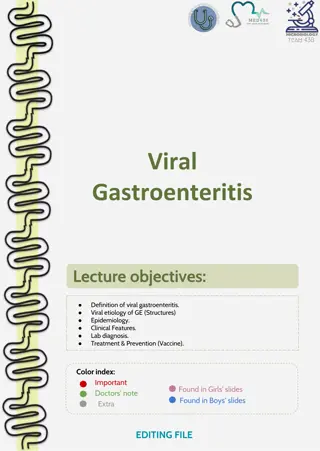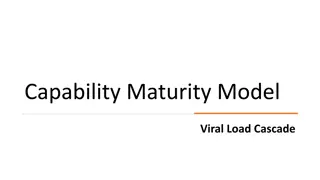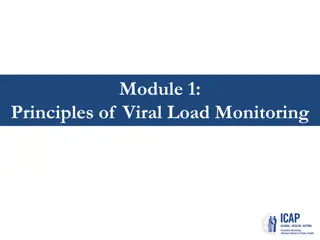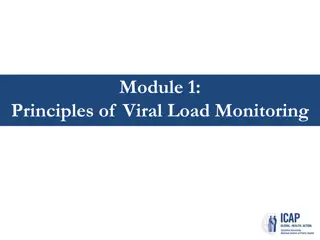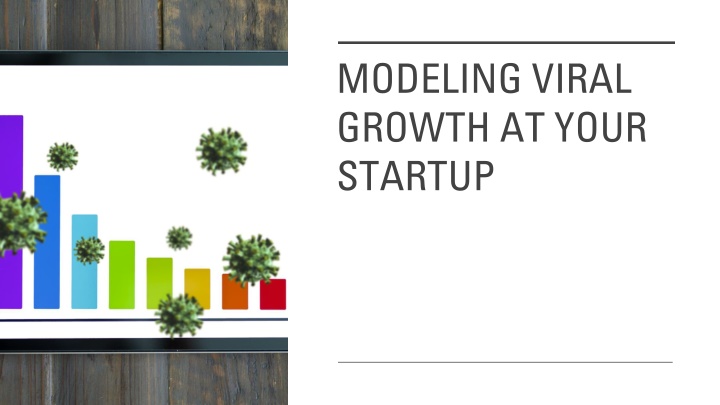
Achieving Viral Growth: Strategies and Metrics Unveiled
Explore the world of viral growth strategies and metrics at your startup through effective modeling techniques. Understand the importance of viral coefficient, conversion rate, and retention rate in driving exponential growth. Dive into expert insights from renowned blogs by David Skok and Andrew Chen to master the art of designing for virality and achieving sustainable viral growth.
Download Presentation

Please find below an Image/Link to download the presentation.
The content on the website is provided AS IS for your information and personal use only. It may not be sold, licensed, or shared on other websites without obtaining consent from the author. If you encounter any issues during the download, it is possible that the publisher has removed the file from their server.
You are allowed to download the files provided on this website for personal or commercial use, subject to the condition that they are used lawfully. All files are the property of their respective owners.
The content on the website is provided AS IS for your information and personal use only. It may not be sold, licensed, or shared on other websites without obtaining consent from the author.
E N D
Presentation Transcript
MODELING VIRAL GROWTH AT YOUR STARTUP
INTRODUCTION TO VIRAL GROWTH What is Viral Growth? Viral growth is a marketing strategy where your product or service is spread through word of mouth, often with the help of social media platforms. It can be an effective way to acquire users and customers, but it's not easy to achieve. How to Achieve Viral Growth? To achieve viral growth, you need to create a product or service that people love and want to share with others. It's important to understand your audience and utilize social media platforms to spread the message. Modeling Viral Growth Modeling viral growth in Excel can be challenging due to the complex nature of the process. However, it's important to understand the impact of different factors, such as the viral coefficient and the adoption rate, on the growth of your product or service.
SEMINAL BLOGS BY SKOK AND CHEN David Skok's Blog David Skok's blog on viral growth is a great resource for understanding key concepts like viral loops and metrics. He emphasizes the importance of measuring virality through a viral coefficient and highlights common challenges in modeling viral growth. Andrew Chen's Blog Andrew Chen's blog on growth is another key resource for understanding viral growth. He emphasizes the importance of designing for virality and highlights strategies for achieving viral growth, including network effects and incentivized sharing.
THE VIRAL GROWTH MODEL Viral Coefficient The viral coefficient is a measure of how many new users each existing user will bring in. Understanding this concept is essential for designing a product or service that can go viral. Conversion Rate Conversion rate is the percentage of users who take the desired action. Improving the conversion rate is key to making viral growth sustainable. Retention Rate Retention rate is the percentage of users who continue to use the product or service over time. Improving retention rate is key to making viral growth durable.
STEP 1: CALCULATE VIRAL COEFFICIENT What is Viral Coefficient? The viral coefficient is a measure of the number of new users gained by each existing user. It is used as a metric to understand the growth potential of a product or service. Calculating Viral Coefficient The viral coefficient is calculated by multiplying the number of invites sent by each user by the conversion rate of those invites. The resulting number is the average number of new users acquired per existing user. Impact of Viral Coefficient A high viral coefficient means that each existing user is bringing in more new users, leading to exponential growth. A low viral coefficient means that growth is linear and requires a larger marketing budget to acquire new users.
STEP 2: CALCULATE CONVERSION RATE What is Conversion Rate? The conversion rate is the percentage of users who become customers. It is calculated by dividing the number of customers by the number of users and multiplying by 100. Interactions with Viral Coefficient The conversion rate is a key factor that interacts with the viral coefficient, which is a measure of how quickly the user base is growing. A high conversion rate can lead to a high viral coefficient and vice versa. Optimizing Landing Pages Landing pages are critical to improving the conversion rate. They should be optimized to provide a clear value proposition, a strong call-to-action, and a user-friendly design. User Onboarding Effective user onboarding can also improve the conversion rate. It should provide clear instructions, a guided tour, and a seamless user experience.
STEP 3: CALCULATE RETENTION RATE What is Retention Rate? Retention rate is defined as the percentage of users who continue to use a product or service over time. It is an important metric for businesses to understand how loyal their user base is. How to Calculate Retention Rate? To calculate retention rate, divide the number of retained users by the total number of users at the start of the time period. Retained users are those who have used the product or service at least once during the time period. Interactions with Viral Coefficient and Conversion Rate Retention rate interacts with viral coefficient and conversion rate to determine the overall growth of a business. Improving retention rate can lead to higher growth and profitability. Improving Retention Rate Businesses can improve retention rate by focusing on product features that offer value to the user, providing excellent customer support, and offering incentives for users to continue using the product or service.
IMPLICATIONS AND USE OF THE NUMBERS Predicting Future Growth Calculated viral coefficient, conversion rate, and retention rate are used to predict future growth. By analyzing these metrics, we can make informed decisions about marketing strategies. Optimizing Marketing Strategy By understanding and analyzing the viral coefficient, conversion rate, and retention rate, we can optimize our marketing strategy to maximize growth and engagement.
CONCLUSION Viral Growth Modeling Benefits Using Excel for modeling viral growth can be highly beneficial for startups in terms of rapid business growth and optimization of marketing strategies. Understanding Key Drivers of Growth Understanding the key drivers of viral growth and how they interact is essential to predict future growth and optimize your marketing strategies. Hands-On Approach Our hands-on approach to modeling viral growth in Excel has provided a useful resource for startups and businesses looking to optimize their growth strategies.










